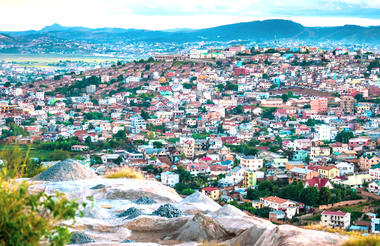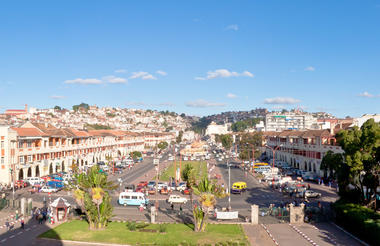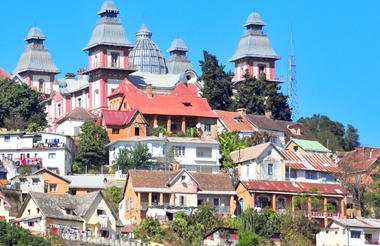Evolution has occurred more or less in isolation on this remote island – located 400 kilometres off Africa’s east coast – with the result that much of its indigenous wildlife is found nowhere else on earth. Madagascar’s menagerie of weird and wonderful creatures includes the world’s biggest and smallest chameleons and over 70 species of lemur – long-tailed primates endemic to the island. The Madagascan landscape is no less compelling than the resident wildlife, with terrain ranging from lush jungles and palm-fringed beaches to the knife-edged karst tsingys of the Tsingy de Bemaraha National Park’s ‘stone forests’. Madagascar is an otherworldly paradise where visitors are offered a unique glimpse into a fantastical one-of-a-kind world.
Antananarivo, also known as Tana, is Madagascar’s capital city. It is perched at 1400 metres above sea level crowning a spectacular mountain range. Founded in 1625, Antananarivo, often considered only as a starting point to the South, North, East and West regions, Antananarivo still has a rich historical heritage that is complemented by scenic landscapes covered in a large network of popular hiking routes.
Known for its vibrant nightlife, Antananarivo features local live music at a variety of clubs and bars.
The city is divided into 3 parts, the upper, middle and lower city. The upper town is the most visited part with its Rova or Queen's Palace which dominates the whole city and offers an exceptional panorama. Another curiosity not to be missed is the large market of Tana or Zoma located in the lower town and whose scents and colours will delight you.
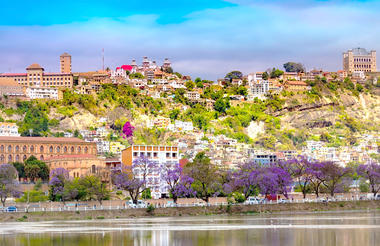
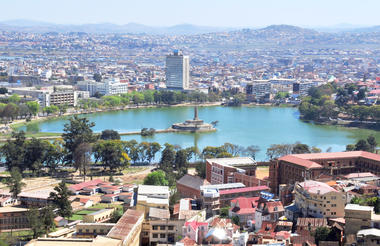
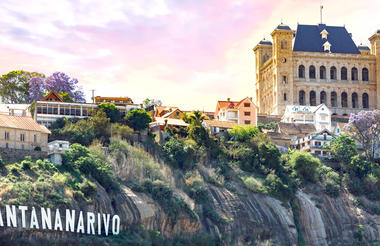
Located in eastern Madagascar in the Moramanga District, the small village of Andasibe is surrounded by a belt of protected rainforest and several parks boasting incredible natural scenery and an array of exotic Madagascan wildlife. It serves as an excellent base from which to explore the spectacularly scenic surrounds. Visitors can look forward to discovering the natural wonders of the nearby Andasibe-Mantadia National Park, Analamazaotra Reserve and Perinet Special Reserve. Don't miss the opportunity to hear the unique song of the large indri lemur, explore a network of incredible trails that wind past glistening lakes and magnificent waterfalls and discover the rich biodiversity in the local flora and fauna.
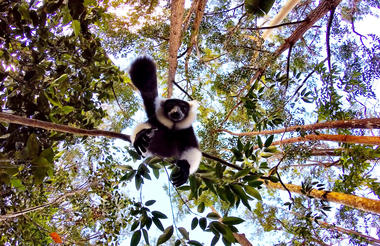
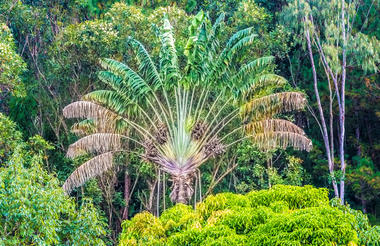

Also known as the Palmarium Reserve, Akanin'ny Nofy Reserve is located on the banks of the Ampitabe Lake on the eastern coast of Madagascar. The literal translation from Malagasy is ‘the nest of dreams’ - an apt name for this slice of paradise - which boasts coastal dunes, lush forest, and a well-maintained trail for visitors to explore. It is home to a variety of flora and fauna as well as a variety of reptiles, frogs, palm trees, carnivorous pitcher plants and an array of orchids. The reserve also features some rare and unique animal species, including the famous dancing sifaka, and seven lemur species including the Indri. Nature enthusiasts will delight in the breathtaking natural scenery and abundant wildlife. The reserve is only accessible via boat, making for a wonderfully adventurous entry into this wild wonderland.



As previously described
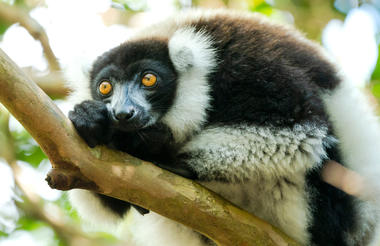
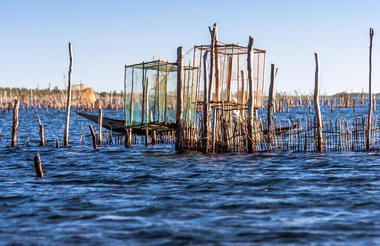
Situated in the Analanjirofo Region in Madagascar, Mahambo is a coastal town, as well as the name of the commune it resides in. This unspoilt village has retained its traditional charm making it the perfect relaxing hideaway. With its picturesque and diverse landscapes, visitors can look forward to relaxing on the pristine swimming beach and meandering along the majestic forest trails. Adventure seekers and nature lovers can explore the hidden coves along the scenic shoreline and go diving and snorkelling in the crystalline waters, rich in marine life. Other popular activities include pirogue tours and surfing.



This long, narrow island off Madagascar’s east coast might be just the piece of heaven you’re looking for. Also known as Nosy Boraha, the island offers the same privacy and mystique they did for the legendary pirates that held out here after their plunders in days gone by, among its lush islets, bays and coves. The waters are endowed with significant coralline growth and provide first-class diving opportunities. If you prefer being ‘onboard’, take a traditional pirogue ride in the calm bays. From July you can witness the migration of substantial groups of humpback whales. History-lovers should make sure to visit the pirates’ cemetery of Saint-Pierre.



As previously described
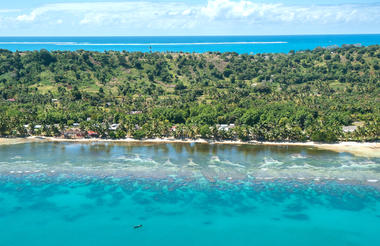


As previously described
As previously described
